Embracing AI is a matter of “when,” not “if," but building an AI strategy in this ever-shifting technological landscape can be a daunting process. Missing the mark risks hobbling your organization's ability to select and optimize the right AI use cases while mitigating their risks. This comprehensive blueprint will help you expedite your AI strategy process to allow you to deliver the quick wins that will propel your organization forward.
The sheer number of AI vendors and use cases can be overwhelming, raising the risk of buying or building products that ultimately have a negative impact on organizational outcomes. We've surveyed the market to find those most likely to benefit your organization, and by quickly establishing underlying AI strategic principles, CIOs can focus exclusively on use cases that will support organizational priorities.
1. Know what you want to achieve.
To be effective, your AI strategy must be in seamless alignment with your overall organizational strategy. Your organization must first be completely clear about its forward-looking goals and objectives before turning to AI to help achieve them.
2. See through the hype.
Your organization’s AI needs are unique. CIOs must see past the trends and hype around solutions like ChatGPT to focus investment on AI that will drive and support business outcomes, not what’s popular in the moment.
3. Don’t be afraid to prioritize early wins.
Long-term thinking is essential when building an AI strategy, but that needn’t mean forgoing short-term benefits. Identify and prioritize use cases that deliver immediate operational benefits while also laying the groundwork for broader transformation.
Use this step-by-step blueprint to build a tailored AI strategy aligned with organizational goals
Our research offers multiphase guidance, templates, and tools to methodically design a rock-solid foundation for your organization’s AI approach. Use this comprehensive blueprint to build an AI strategy that embraces AI in a way that maximizes its value to your organization while effectively managing its risks.
- Establish the scope of your AI strategy to develop a vision statement, strategic principles, and organization-aligned goals.
- Assess AI maturity and identify use cases to draw up a candidate AI vendor list and identify challenges and risks for individual use cases.
- Detail and prioritize AI use cases and align them with organizational goals and capabilities.
- Develop your AI roadmap, prepare your communication approach, and present your strategy to senior management and stakeholders.
Member Testimonials
After each Info-Tech experience, we ask our members to quantify the real-time savings, monetary impact, and project improvements our research helped them achieve. See our top member experiences for this blueprint and what our clients have to say.
9.4/10
Overall Impact
$70,672
Average $ Saved
31
Average Days Saved
Client
Experience
Impact
$ Saved
Days Saved
Oregon Water Resources Department
Guided Implementation
10/10
N/A
N/A
Altaz did an executive presentation on AI in 30 min with a demo and high-level presentation. They were all impressed, and I could see their interes... Read More
Courageous Business Culture Inc
Guided Implementation
9/10
$1,800
6
The best is the range of your experience.
Covius Services, LLC
Guided Implementation
10/10
$34,000
20
Best - Altaz's presentation and the information shared was excellent. Worst - Certain Covius attendees had not read a word of the previously sha... Read More
City of Wetaskiwin
Guided Implementation
10/10
$40,000
20
Pittsburgh Pirates
Workshop
9/10
$13,600
10
Areez had a well laid out plan and moved quickly through the process, but covered the topics well.
BK GROUP PLC
Guided Implementation
10/10
$40,800
90
Encore Electric
Workshop
8/10
$13,600
10
Areez was an excellent facilitator and Encore was left with a clear action plan to try out Generative AI on 5 important use cases.
Wise Foods Inc
Workshop
10/10
$1.36M
50
Best: Very good comments of the workshop. Worst: Nothing really.
Garfield County IT
Guided Implementation
10/10
$2,584
5
Bill's presentation was informative and provided suggestions for moving forward with our AI strategy.
UniSuper
Guided Implementation
7/10
$9,000
5
Greenstone Financial Services Pty Ltd.
Guided Implementation
9/10
$9,000
5
Good support from Juliana who was the Analyst. Gave us good insights on AI strategy, policies, industry insights on governance and operating model.... Read More
Rack Room Shoes
Workshop
10/10
$34,000
20
Good: Getting Rack Room associates from across the business in one room to align and learn about AI. Bad: Not having AI policies and AI usage guid... Read More
UNITING AGEWELL LIMITED
Guided Implementation
9/10
$90,000
20
I highly appreciated Julianna's expertise in all aspects of AI. Our AI strategy puts us in strong position to advance our AI strategy. No negative ... Read More
Blue Cross of Idaho Health Service, Inc.
Guided Implementation
10/10
N/A
60
ERCO Worldwide LP
Guided Implementation
10/10
N/A
120
Excellent initial conversation on AI preparedness and project execution
County of Inyo
Guided Implementation
9/10
$68,000
1
Affinity Plus Federal Credit Union
Guided Implementation
9/10
$13,600
9
Chemeketa Community College
Guided Implementation
7/10
$1,496
2
Provided the break through needed as to why following the tools and guidance of other Info Tech tools on this subject to hadn't worked within the ... Read More
MDU Services LTD
Guided Implementation
10/10
$18,499
20
Workers Federal Credit Union
Guided Implementation
7/10
N/A
N/A
Since this was just the first meeting with Martin, it is too premature to put value based on the first call. I think Martin will bring a lot to the... Read More
Kentucky Housing Corporation
Workshop
10/10
$34,000
35
The workshop could easily be configured for 5 days. This would allow for further consumption of the material and process. Overall, the workshop is ... Read More
Goodwill of Colorado
Guided Implementation
10/10
$68,000
100
IDP EDUCATION LIMITED
Guided Implementation
10/10
N/A
N/A
Great conversation
British Columbia Lottery Corporation
Workshop
8/10
$100K
10
Enjoyed the connecting of AI practicioners in one spot to talk about current state and the future. I felt a little too much time was spent review... Read More
British Columbia Assessment
Workshop
10/10
$100K
80
Both Areez and Jeff were fantastic to work with on this project. Their knowledge and experience was invaluable. Areez is an exceptional facilitato... Read More
Altarum Institute
Guided Implementation
10/10
$13,600
5
Altaz is very knowledgeable and helpful.
PowerNet Limited
Guided Implementation
9/10
$34,000
32
Julianna was fantastic to work with, The Info-Tech material was very easy to work through. No bad parts. I believe the process could have gone fa... Read More
Al Nahdi Medical
Guided Implementation
10/10
$15,640
5
Douglas County, Colorado
Guided Implementation
10/10
$34,000
60
knowledge of SME was outstanding and the ability to use proven roadmap
Dentons Canada Services LP
Guided Implementation
10/10
N/A
10
Altaz takes a very pragmatic approach and offers very grounded advice. Tremendous value packed into a one hour call!
Workshop: Build Your AI Strategy Roadmap
Workshops offer an easy way to accelerate your project. If you are unable to do the project yourself, and a Guided Implementation isn't enough, we offer low-cost delivery of our project workshops. We take you through every phase of your project and ensure that you have a roadmap in place to complete your project successfully.
Module 1: Establish the Scope of Your AI Strategy
The Purpose
Confirm the boundaries and limitations of your AI strategy.
Key Benefits Achieved
Develop your readiness to act based on validated goals and principles.
Activities
Outputs
Understand your business goals and value drivers.
Elicit business aligned AI goals.
- Business-aligned AI goals
Develop a vision for the AI-enabled organization.
- AI vision statement
Develop strategic guiding principles for your strategy.
- Strategic AI principles
Module 2: Identify AI Use Cases and Assess AI Maturity
The Purpose
Identify business aligned AI use cases and evaluate the current state of AI maturity to implement them.
Key Benefits Achieved
A well-informed set of AI use cases with strong links to strategy and culture.
Activities
Outputs
Identify AI use cases that resonate with your strategic business goals and capabilities.
- Candidate AI business use case list
Understand AI maturity dimensions and evaluate current state of AI capabilities.
- AI current-state maturity assessment results
Identify your strategic AI investment path.
- Investment path decision
Module 3: Detail and Prioritize AI Use Cases
The Purpose
Establish priorities for the next steps.
Key Benefits Achieved
Promotion of high-value ideas with believable ability to execute.
Activities
Outputs
Build one-pagers for AI use cases.
- Detailed one-pagers for AI use cases
Align AI use cases to your business initiatives, capabilities, and AI goals.
- An alignment chart of AI goals, business capabilities, and AI use cases
Prioritize AI use cases based on feasibility and value.
- Prioritized list of AI use cases
Module 4: Develop Your AI Roadmap
The Purpose
Visualize high-priority use cases in a realistic timeline.
Key Benefits Achieved
Leadership alignment on priority and timing.
Activities
Outputs
Develop the AI initiative roadmap.
- AI roadmap (Gantt chart format)
Determine next steps and communication approach.
- AI strategy one-pager
Finalize your AI strategy presentation.
- Preliminary AI strategy presentation
Build Your AI Strategy Roadmap
Develop your AI strategy to maximize return and mitigate risks with your AI investments.
Analyst Perspective
Transforming the organization with AI.
Today, every organization is being challenged to determine their strategy on the use of AI-based solutions. Never in our history has a technology become so accessible and, at that same time, so disruptive. This is a unique time in our history. The benefits of AI are transformative and readily accessible to all organizations – but the introduction of transformative capabilities also introduces new risks that need to be planned for.
A successful business-driven AI strategy requires:
- Alignment to the organizational strategy.
- AI goals and strategic AI principles to guide investments.
- Candidate business capabilities that can be augmented or automated with AI to drive business value.
- A roadmap to deliver and support new AI-based solutions.

Bill Wong
Research Fellow
Info-Tech Research Group
Executive Summary
Your Challenge
AI is disrupting all industries and providing opportunities for organization-wide advantages.
Organizations need to understand this disruptive technology and the trends to properly develop a strategy for leveraging this technology successfully.
C-suite technology leaders need to:
- Identify AI use cases that align with your organization’s capabilities and goals.
- Organizations need to adopt a data-driven culture.
All organizations, regardless of size, should be planning how to respond to this new and innovative technology.
Common Obstacles
Business stakeholders need to cut through the hype surrounding AI to optimize investments for leveraging this technology to drive business outcomes. They need to:
- Understand the market landscape and the benefits and risks associated with AI.
- Understand the gaps the organization needs to address to fully leverage AI.
Without a proper strategy and foundational AI guiding principles, the risks to deploying this technology could negatively impact business outcomes.
Solution
Info-Tech’s human-centric, value-based approach is a guide for deploying AI applications, including:
- Aligning AI initiatives to the organization’s business drivers.
- Adopting strategic AI guiding principles.
- Evolving an AI maturity model.
- Prioritizing candidate generative AI-based use cases.
- Developing AI policies.
This blueprint will provide a list of activities and deliverables required for the successful deployment of generative AI solutions.
Info-Tech Insight
Create awareness among the CEO and C-suite executives about the potential benefits and risks of transforming the business with AI.
Your challenge
This research is designed to help organizations that are looking to:
- Develop a business-driven AI strategy to maximize the benefits and minimize the risks associated with AI-based solutions.
- Understand the potential opportunities to improve business outcomes and best practices to govern the risks with developing or deploying AI applications.
- Assess the organization’s capabilities to provide AI governance, a data platform optimized for analytics, access to AI skills and processes, and the supporting technology infrastructure.
- Have clear metrics in place to measure the progress and success of AI initiatives.
- Build the roadmap to implement candidate use cases.
Common obstacles
These barriers are challenging for many organizations:
- Getting all the right business stakeholders together to develop the organization’s AI strategy, vision, and objectives.
- Establishing strategic AI principles to guide AI investments and deployments.
- Advancing the AI maturity of the organization to meet requirements of data and AI governance as well as human-based requirements such as fairness, transparency, and accountability.
- Assessing AI opportunities and developing policies for use.
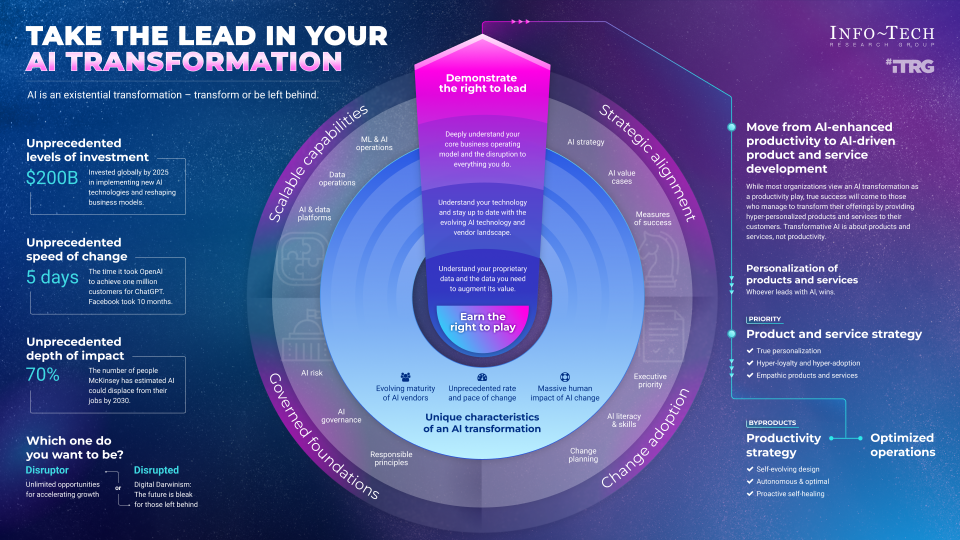
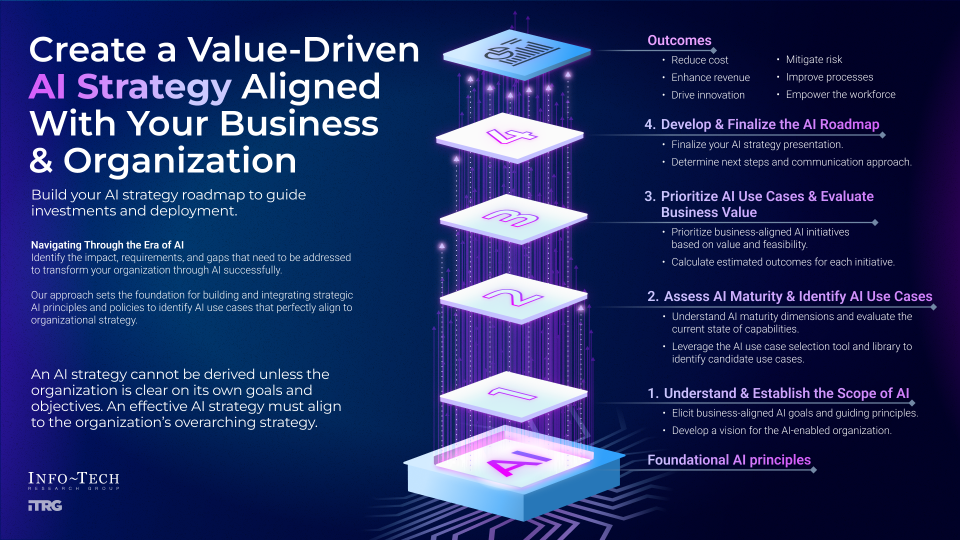
Align your AI strategy with AI governance
An effective AI strategy must intersect with an organization’s governance and compliance requirements
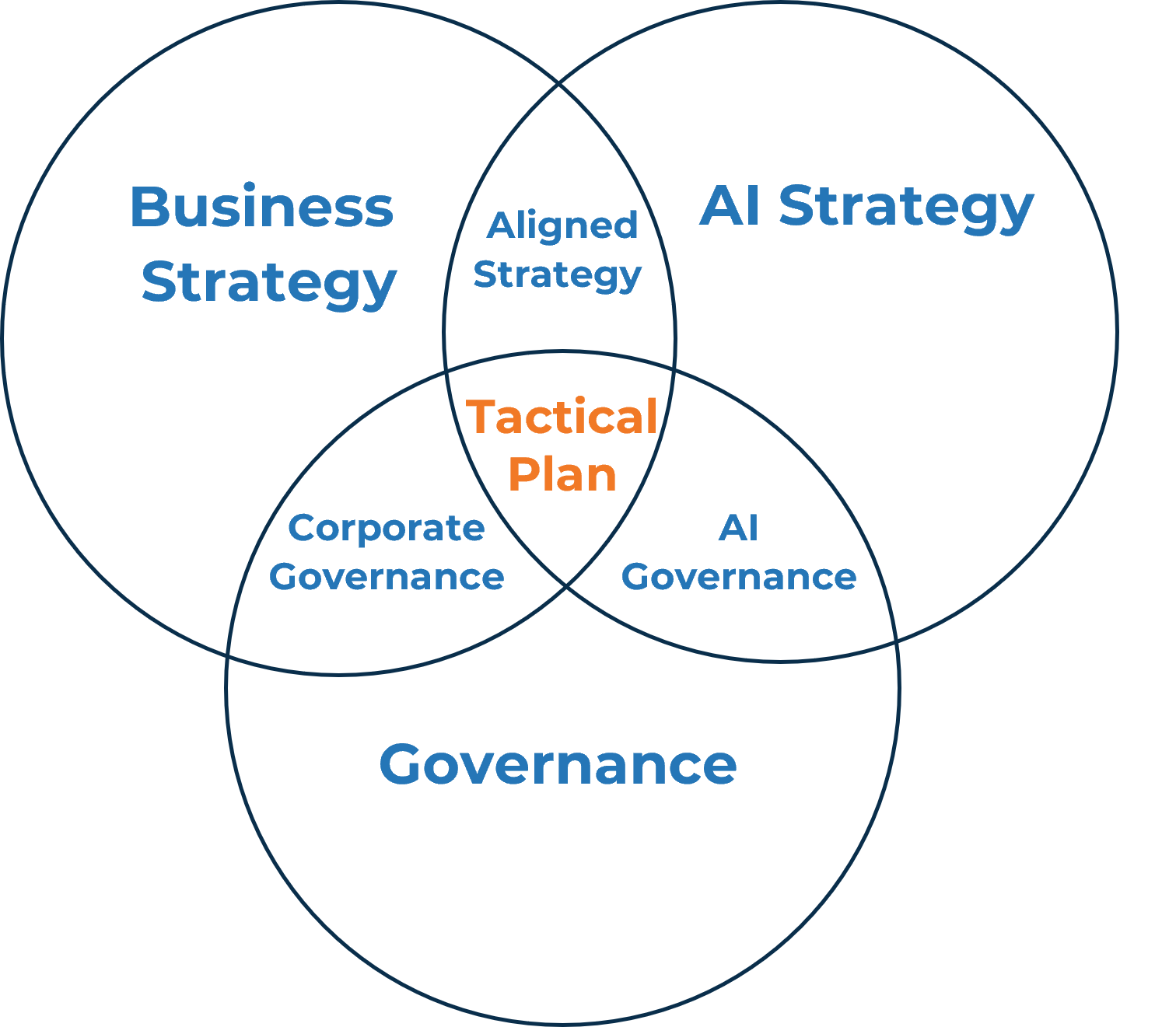
Scope
- This blueprint provides guidance for aligning your AI strategy with your organizational strategy.
- This approach sets the foundations for building and applying foundational AI principles and AI policies aligned to corporate governance and key regulatory obligations (e.g. privacy). Both steps are foundational components of how you should develop, manage, and govern your AI program but are not a substitute for implementing broader AI governance.
Guidance on how to implement AI governance can be found in the blueprint linked below.
Download our Govern the Use of AI Responsibly With a Fit-for-Purpose Structure blueprint
Measure the value of this blueprint
Leverage this blueprint’s approach to ensure your AI initiatives align with and support your key business drivers
This blueprint will guide you to drive and improve business outcomes. Key business drivers will often focus on:
- Improving customer experience
- Increasing revenue
- Reducing costs
- Improving time to market
- Reducing risk
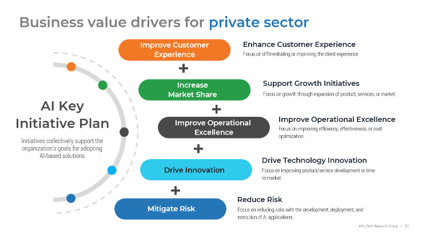
In Phase 1 of this blueprint, we will help you identify the key AI strategy initiatives that align to your organization’s goals. Value to the organization is often measured by the estimated impact on revenue, costs, time to market, or risk mitigation.
In Phase 4, we will help you develop a plan and a roadmap for addressing any gaps and introducing the relevant AI capabilities that drive value to the organization based on defined business metrics.
Once you implement your 12-month roadmap, start tracking the metrics below over the next fiscal year (Year 1) to assess the effectiveness of measures:
Improving Customer Experience |
Increased customer engagement and market share |
Increasing Market Share |
Increased revenue from identified key areas |
Improving Operational Excellence |
Decreased costs for identified business units |
Improving Time to Market |
Time savings and accelerated revenue adoption |
Reducing Risk |
Cost savings or revenue gains from identified business units |
Example business outcome objectives and metrics for a private organization.
Build Your AI Strategy Roadmap
Contact your account representative for more information.
workshops@infotech.com 1-888-670-8889
Prework |
Session 1 |
Session 2 |
Session 3 |
Session 4 |
Post-Workshop |
|
Understand Business Strategy & AI Adoption |
Establish Scope of AI Strategy |
Identify AI Use Cases & Assess AI Maturity |
Detail & Prioritize AI Use Cases |
Develop AI Roadmap |
Next Steps and Wrap-Up (Offsite) |
|
Activities |
CXO to:
|
|
|
|
|
|
Outcomes |
|
|
|
|
|
|
Info-Tech offers various levels of support to best suit your needs
DIY Toolkit |
Guided Implementation |
Workshop |
Executive & Technical Counseling |
Consulting |
| “Our team has already made this critical project a priority, and we have the time and capability, but some guidance along the way would be helpful.” | “Our team knows that we need to fix a process, but we need assistance to determine where to focus. Some check-ins along the way would help keep us on track.” | “We need to hit the ground running and get this project kicked off immediately. Our team has the ability to take this over once we get a framework and strategy in place.” | “Our team and processes are maturing; however, to expedite the journey we'll need a seasoned practitioner to coach and validate approaches, deliverables, and opportunities.” | “Our team does not have the time or the knowledge to take this project on. We need assistance through the entirety of this project.” |
Diagnostics and consistent frameworks are used throughout all five options. |
||||
Guided Implementation
A Guided Implementation (GI) is a series of calls with an Info-Tech analyst to help implement our best practices in your organization.
A typical GI is 10 to 12 calls over the course of 2 to 3 months.
What does a typical GI on this topic look like?
Phase 1 |
Phase 2 |
Phase 3 |
Phase 4 |
| Call #1: Scope requirements, objectives, and your specific challenges.
Call #2: Define AI vision statement. Call #3: Identify business-aligned AI goals. Call #4: Identify strategic principles. |
Call #5: Identify candidate AI use cases.
Call #6: Assess the organization’s current-state capabilities for managing AI and your strategic investment path. |
Call #7: Prioritize the business AI initiatives.
Call #8: Assess the value and feasibility of the business AI initiatives. |
Call #9: Build an AI strategy roadmap.
Call #10: Build a communication plan. Call #11: Build an executive AI strategy roadmap deck. |
Insight summary
Overarching Insight
An AI strategy cannot be derived unless the organization is clear on its forward-looking goals and objectives. An effective AI strategy must align to the organization’s strategy.
AI Strategy
A business-driven AI strategy is one that is aligned with the firm’s organizational strategy. Key components of the AI strategy include:
- AI vision and mission statements
- Business value drivers
- Strategic AI principles
- Foundational AI principles
Buy vs. Build
Most organizations will be exposed to AI via incumbent software or purchasing off-the-shelf tools. Seek to buy first before deciding if you have no other option but to build.
- Assess current AI maturity.
- Identify AI strategic investment path.
Opportunity Prioritization
Assess candidate business capabilities targeted for generative AI to see if they align to the organization’s business criteria, foundational AI guiding principles, and capabilities for delivering the project.
- Develop a prioritized list of candidate use cases.
- Detail use cases and estimate business value.
Tactical Insight
Business stakeholders need to cut through the hype surrounding AI, including apps like ChatGPT, to optimize investments for leveraging this technology to drive business outcomes.
Tactical Insight
Identify and prioritize use cases that deliver immediate operational benefits while also laying the groundwork for broader transformation.
Blueprint deliverables
Each step of this blueprint is accompanied by supporting deliverables to help you accomplish your goals:
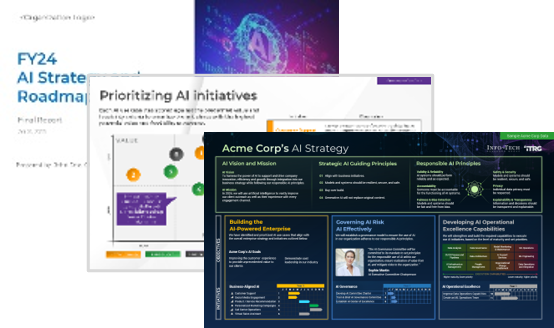

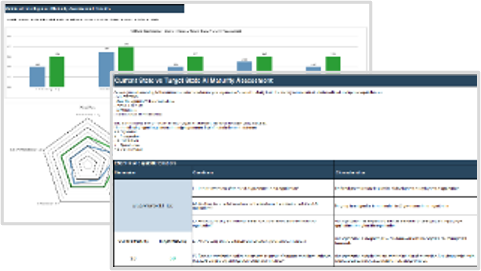
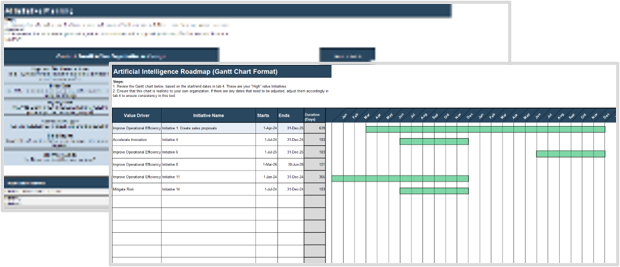
Our AI Maturity Assessment Tool, AI Initiatives Prioritization and Roadmap Planning Tool, and AI Strategy & Roadmap Presentation Template enable you to shape your generative AI roadmap and communicate the value of the initiatives to your C-suite sponsors.
Case Studies: Leveraging AI Strategy
Overall Impact: 9.4/10 | Average $ Saved: $55,509 | Average Days Saved: 34
City of Arlington
“We are incredibly grateful for the facilitator and the AI strategy process, which truly stood out as the most impactful part of the workshop. As a large city with over 27 lines of business, Info-Tech's AI Strategy Workshop brought our City departments together in a meaningful and transformative way, far exceeding expectations. The value it provided was unmatched by any other initiative we’ve tried in-house.”
- Impact: 10/10
- $ Saved: $137,000
- Days Saved: 90
County of San Luis Obispo
“Well organized material; knowledgeable, well effective presenter, quick turnaround and excellent follow-up on findings; practical application of workshop priorities.”
- Impact: 10/10
- $ Saved: $51,375
- Days Saved: 20
First Global Management Services, Inc.
“This was good reinforcement of the messages we've been hearing from other IT leaders, but it was delivered in a more programmatic way. It was a good discussion. This wasn't yet directed at time or cost savings, but we probably will have some cost savings just by not doing the wrong thing.”
- Impact: 10/10
- $ Saved: $13,700
PowerNet Limited
“Julianna was fantastic to work with, The Info-Tech material was very easy to work through. No bad parts.”
- Impact: 9/10
- $ Saved: $34,250
- Days Saved: 32
Cut through the marketing hype to understand AI
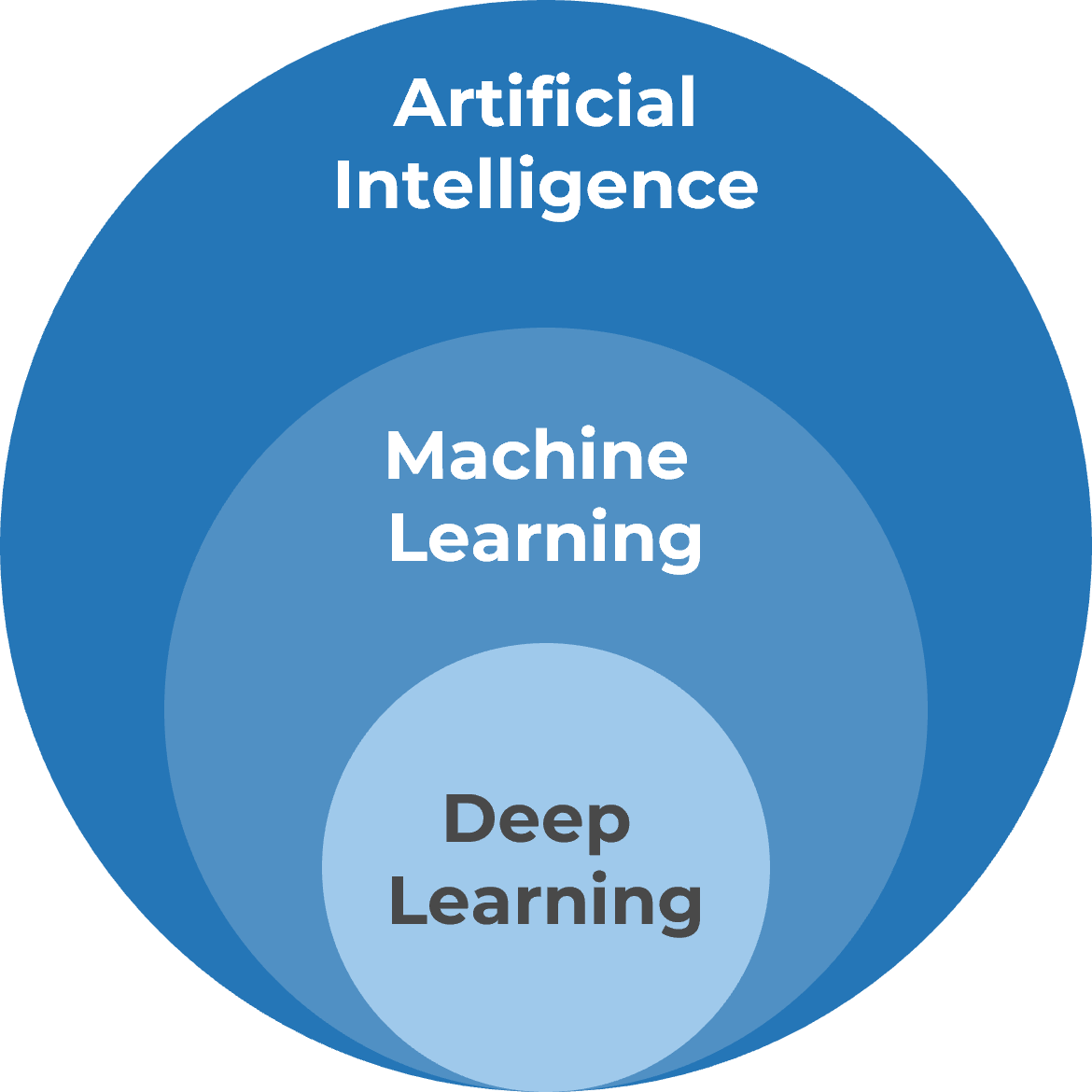
Definitions
- Artificial intelligence (AI) is human intelligence mimicked by machine algorithms. Example: Playing chess or Go.
- Machine learning (ML) is a subset of AI algorithms to parse data, learn from data, and then make a determination or prediction. Examples: Spam detection, preventative maintenance.
- Deep learning (DL) is a subset of ML algorithms that leverage artificial neural networks to develop relationships among the data. Examples: Image classification, facial recognition, generative AI.
What Makes AI Different

What Makes AI Perform
![]()
![]()
![]()




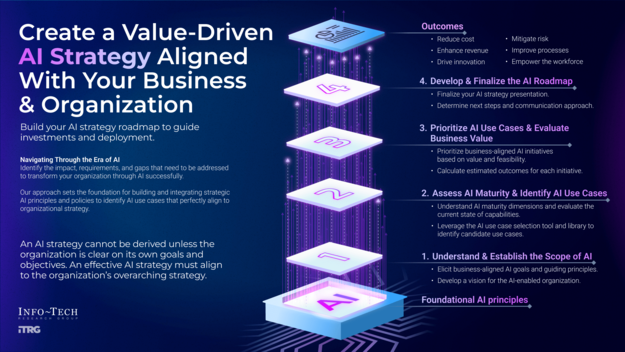
 Tech Trends 2025
Tech Trends 2025
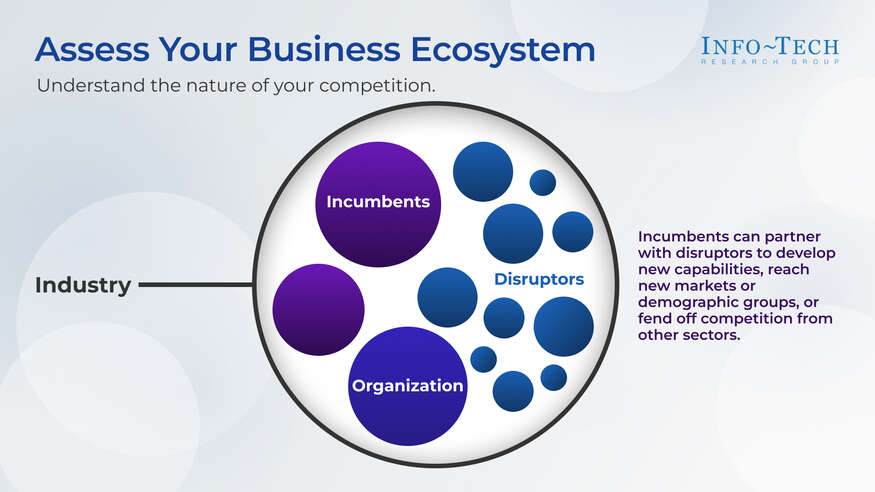 Define Your Digital Business Strategy
Define Your Digital Business Strategy
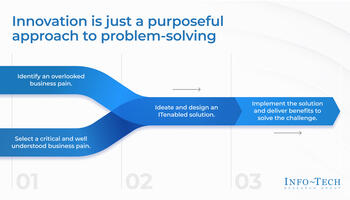 Kick-Start IT-Led Business Innovation
Kick-Start IT-Led Business Innovation
 Establish a Foresight Capability
Establish a Foresight Capability
 Apply Design Thinking to Build Empathy With the Business
Apply Design Thinking to Build Empathy With the Business
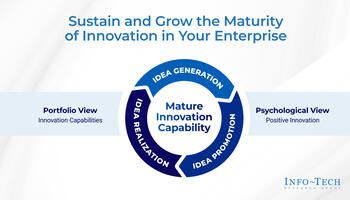 Sustain and Grow the Maturity of Innovation in Your Enterprise
Sustain and Grow the Maturity of Innovation in Your Enterprise
 Position IT to Support and Be a Leader in Open Data Initiatives
Position IT to Support and Be a Leader in Open Data Initiatives
 Double Your Organization’s Effectiveness With a Digital Twin
Double Your Organization’s Effectiveness With a Digital Twin
 Develop a Use Case for Smart Contracts
Develop a Use Case for Smart Contracts
 Adopt Design Thinking in Your Organization
Adopt Design Thinking in Your Organization
 Accelerate Digital Transformation With a Digital Factory
Accelerate Digital Transformation With a Digital Factory
 Tech Trends 2024
Tech Trends 2024
 2021 Tech Trends
2021 Tech Trends
 Implement and Mature Your User Experience Design Practice
Implement and Mature Your User Experience Design Practice
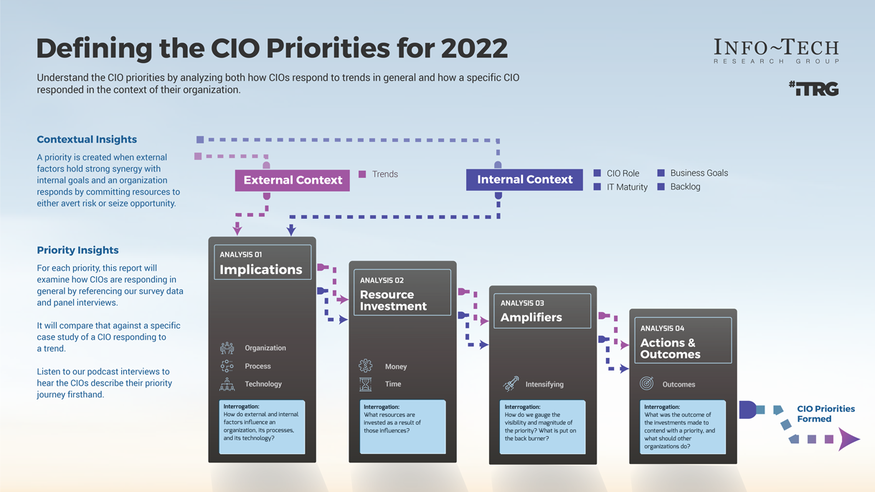 CIO Priorities 2022
CIO Priorities 2022
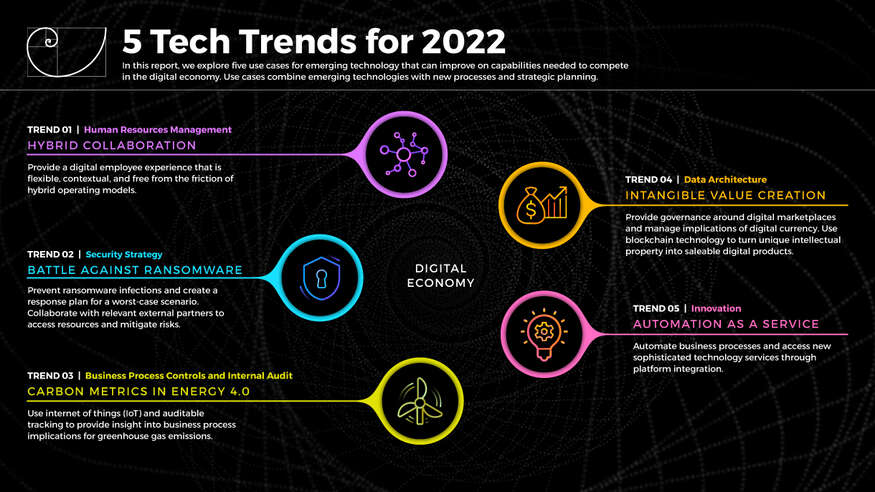 2022 Tech Trends
2022 Tech Trends
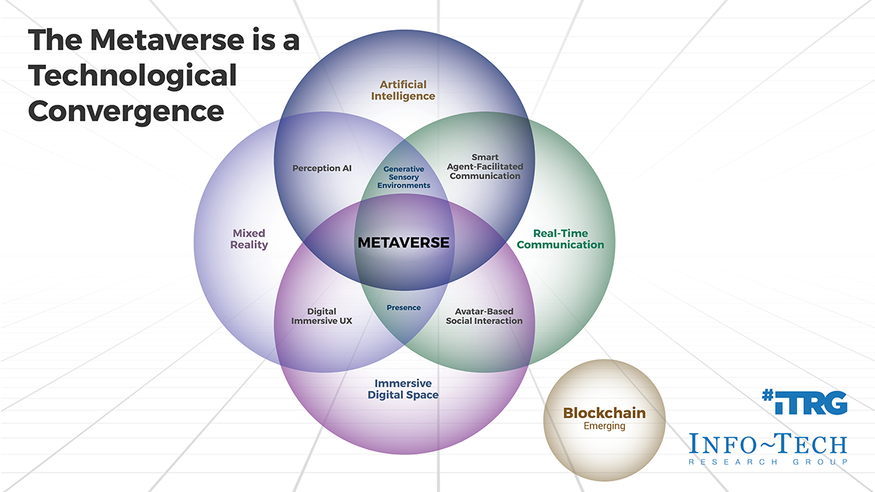 Into the Metaverse
Into the Metaverse
 Demystify Blockchain: How Can It Bring Value to Your Organization?
Demystify Blockchain: How Can It Bring Value to Your Organization?
 2020 Tech Trend Report
2020 Tech Trend Report
 2020 CIO Priorities Report
2020 CIO Priorities Report
 CIO Trend Report 2019
CIO Trend Report 2019
 CIO Trend Report 2018
CIO Trend Report 2018
 CIO Trend Report 2017
CIO Trend Report 2017
 AI and the Future of Enterprise Productivity
AI and the Future of Enterprise Productivity
 Evolve Your Business Through Innovation
Evolve Your Business Through Innovation
 Build a Platform-Based Organization
Build a Platform-Based Organization
 Tech Trend Update: If Contact Tracing Then Distributed Trust
Tech Trend Update: If Contact Tracing Then Distributed Trust
 Tech Trend Update: If Biosecurity Then Autonomous Edge
Tech Trend Update: If Biosecurity Then Autonomous Edge
 Tech Trend Update: If Digital Ethics Then Data Equity
Tech Trend Update: If Digital Ethics Then Data Equity
 Tech Trends 2023
Tech Trends 2023
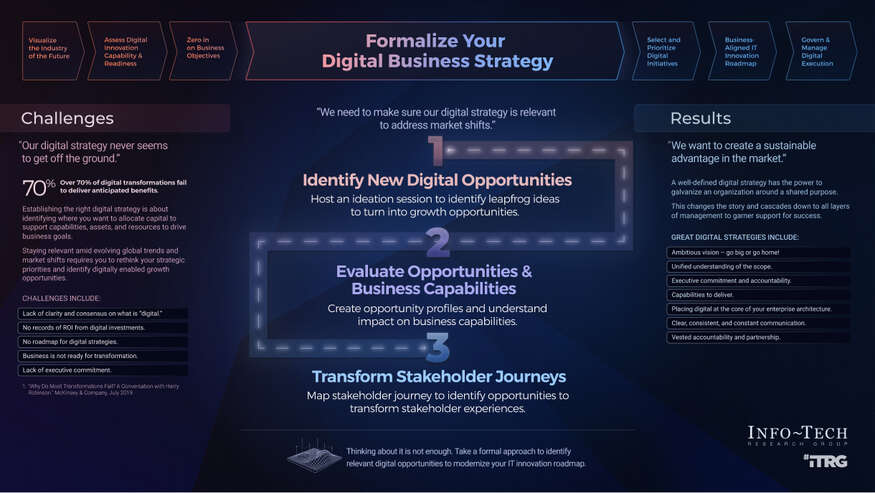 Formalize Your Digital Business Strategy
Formalize Your Digital Business Strategy
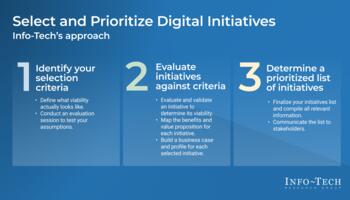 Select and Prioritize Digital Initiatives
Select and Prioritize Digital Initiatives
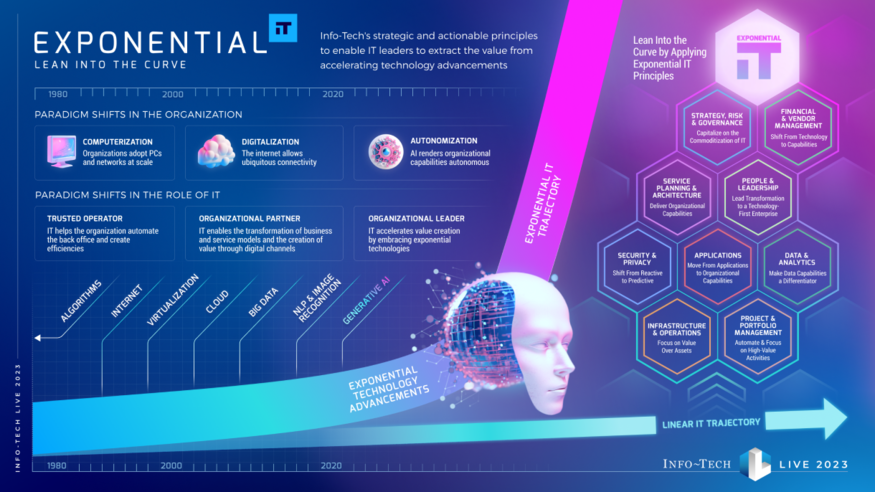 Adopt an Exponential IT Mindset
Adopt an Exponential IT Mindset
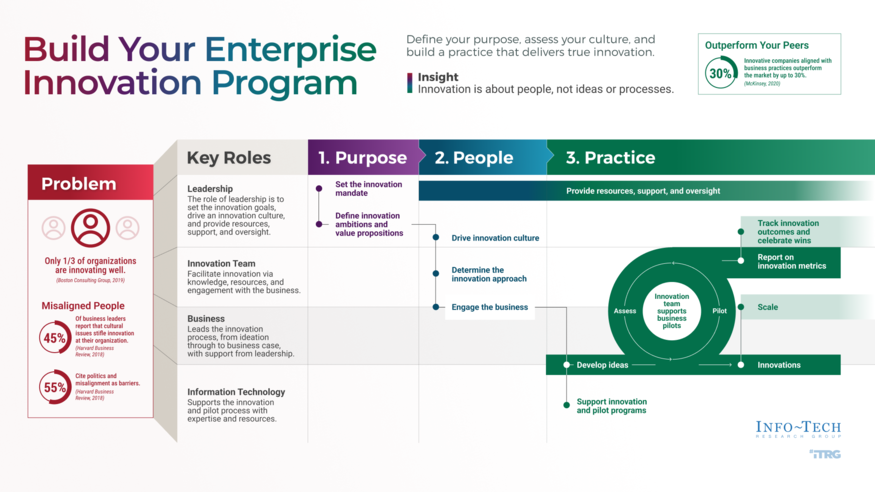 Build Your Enterprise Innovation Program
Build Your Enterprise Innovation Program
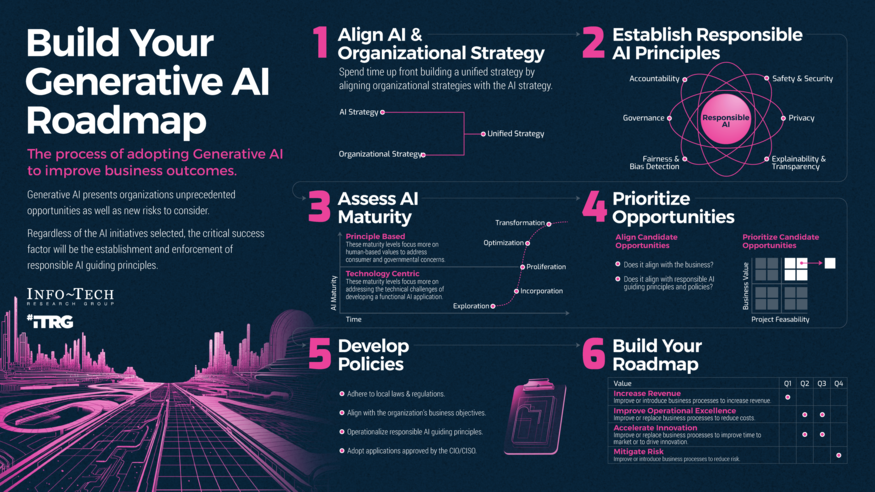 Build Your Generative AI Roadmap
Build Your Generative AI Roadmap
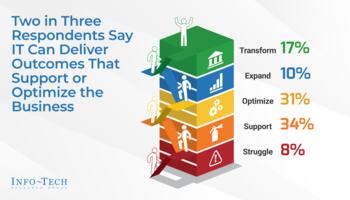 Annual CIO Survey Report 2024
Annual CIO Survey Report 2024
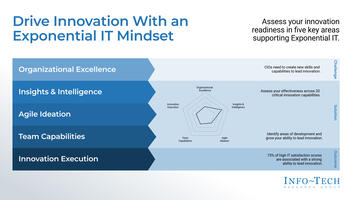 Drive Innovation With an Exponential IT Mindset
Drive Innovation With an Exponential IT Mindset
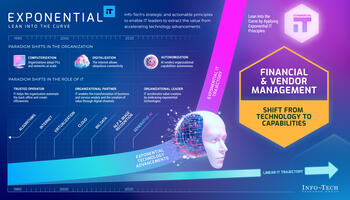 Exponential IT for Financial and Vendor Management
Exponential IT for Financial and Vendor Management
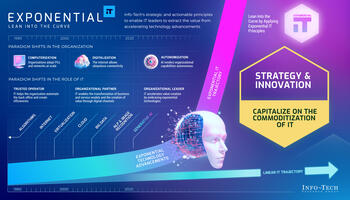 Exponential IT for Strategy, Risk, and Governance
Exponential IT for Strategy, Risk, and Governance
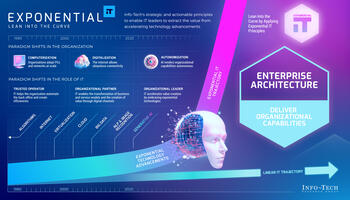 Exponential IT for Service Planning and Architecture
Exponential IT for Service Planning and Architecture
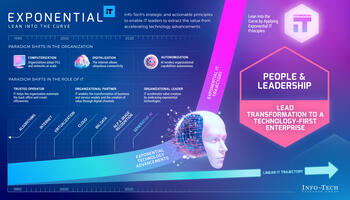 Exponential IT for People and Leadership
Exponential IT for People and Leadership
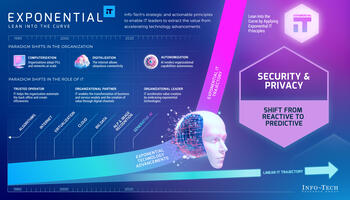 Exponential IT for Security and Privacy
Exponential IT for Security and Privacy
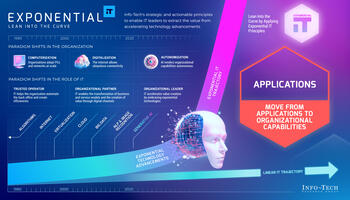 Exponential IT for Applications
Exponential IT for Applications
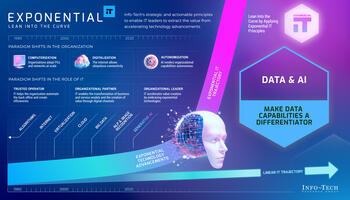 Exponential IT for Data and Analytics
Exponential IT for Data and Analytics
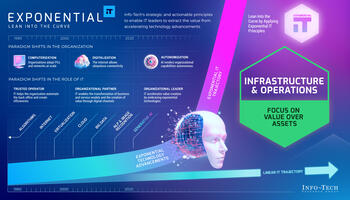 Exponential IT for Infrastructure and Operations
Exponential IT for Infrastructure and Operations
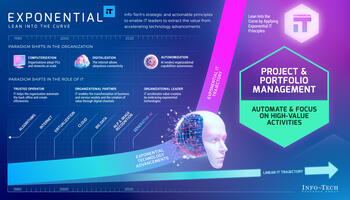 Exponential IT for Project and Portfolio Management
Exponential IT for Project and Portfolio Management
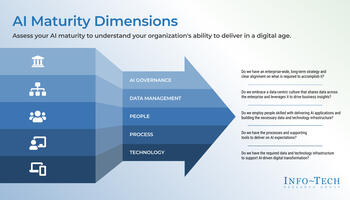 Assess Your AI Maturity
Assess Your AI Maturity
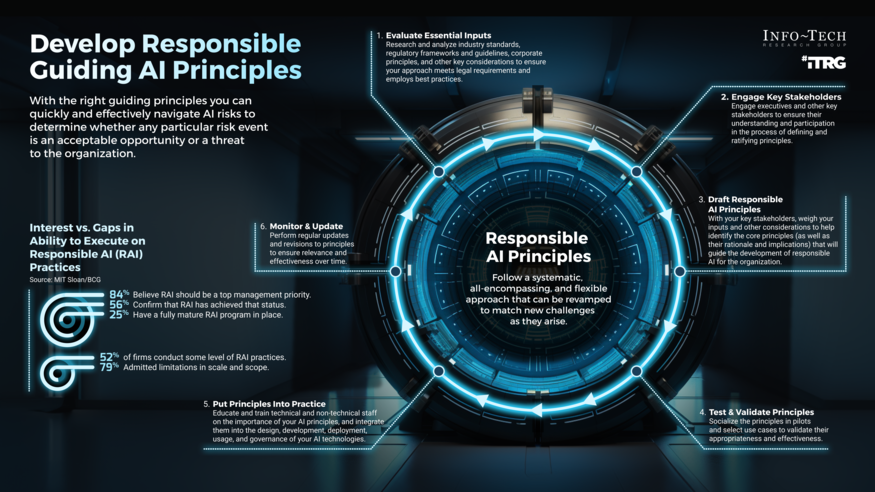 Develop Responsible AI Guiding Principles
Develop Responsible AI Guiding Principles
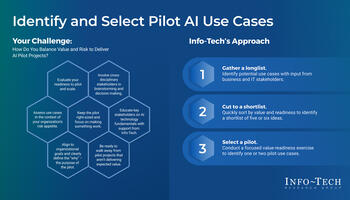 Identify and Select Pilot AI Use Cases
Identify and Select Pilot AI Use Cases
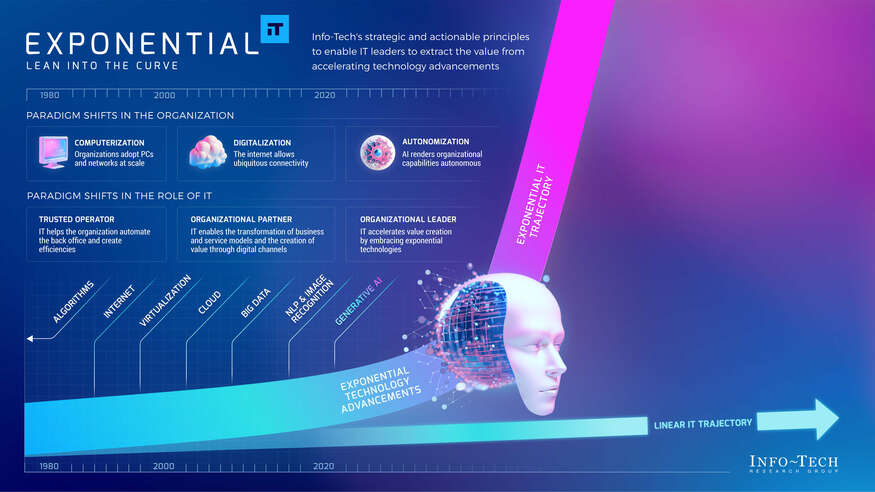 Exponential IT Keynote
Exponential IT Keynote
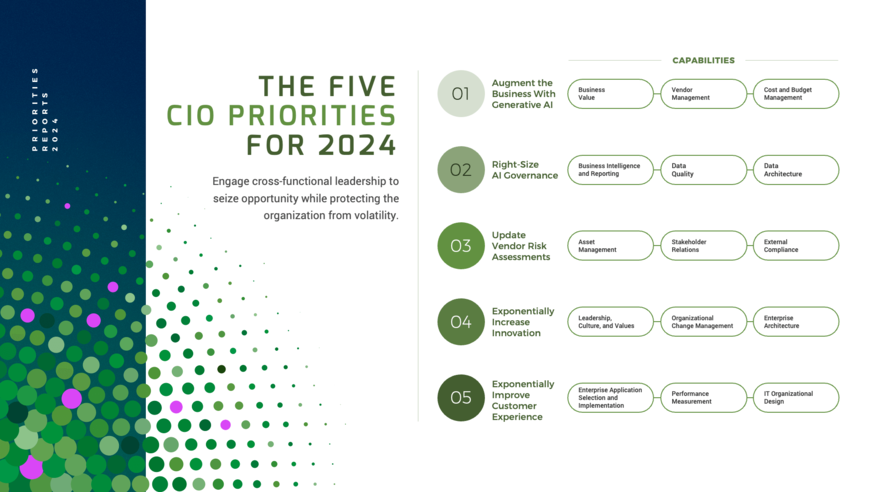 CIO Priorities 2024
CIO Priorities 2024
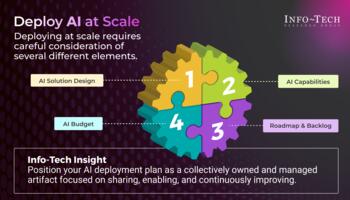 Build a Scalable AI Deployment Plan
Build a Scalable AI Deployment Plan
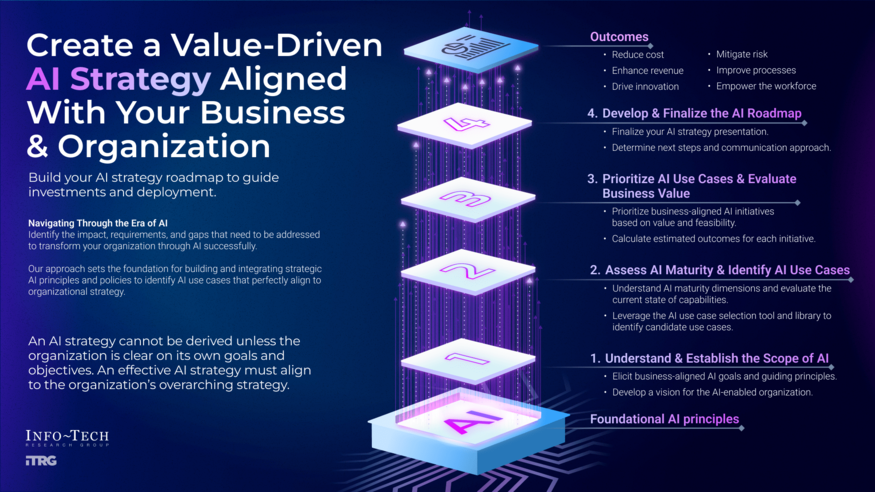 Build Your AI Strategy Roadmap
Build Your AI Strategy Roadmap
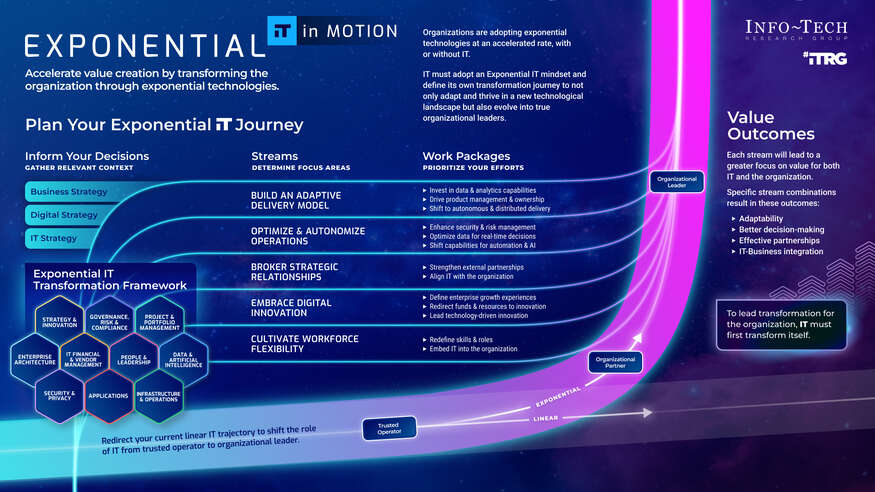 Develop an Exponential IT Roadmap
Develop an Exponential IT Roadmap
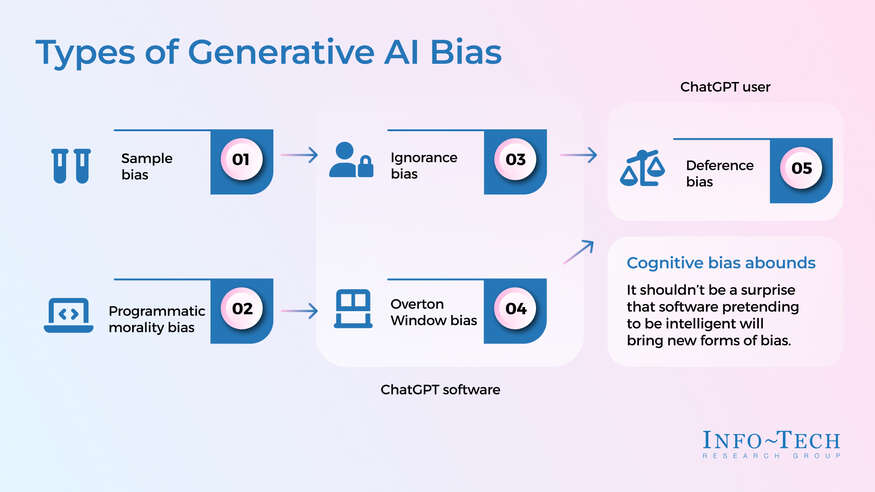 Use ChatGPT Wisely to Improve Productivity
Use ChatGPT Wisely to Improve Productivity
_(1)_previewe23b.jpg) Build a FinOps Strategy to Enable Dynamic Cloud Cost Management
Build a FinOps Strategy to Enable Dynamic Cloud Cost Management
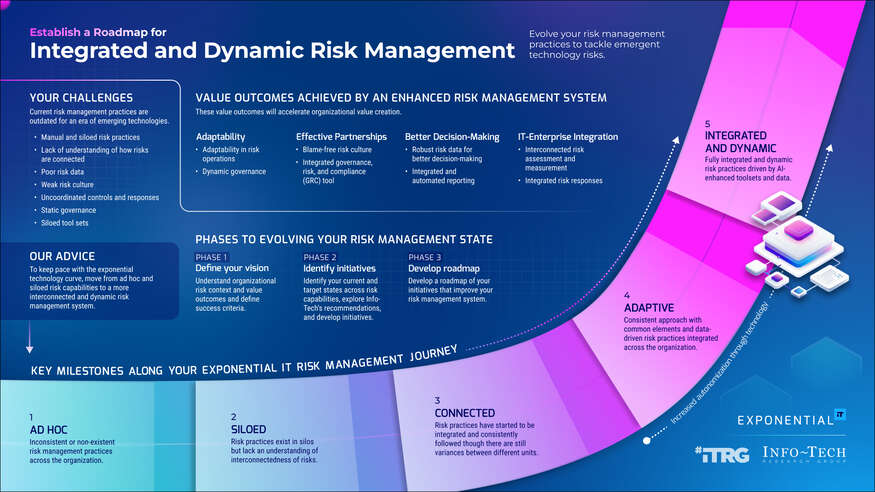 Establish a Roadmap for Integrated and Dynamic Risk Management
Establish a Roadmap for Integrated and Dynamic Risk Management
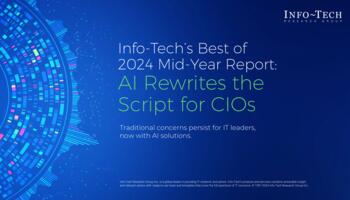 Info-Tech’s Best of 2024 Mid-Year Report: AI Rewrites the Script for CIOs
Info-Tech’s Best of 2024 Mid-Year Report: AI Rewrites the Script for CIOs
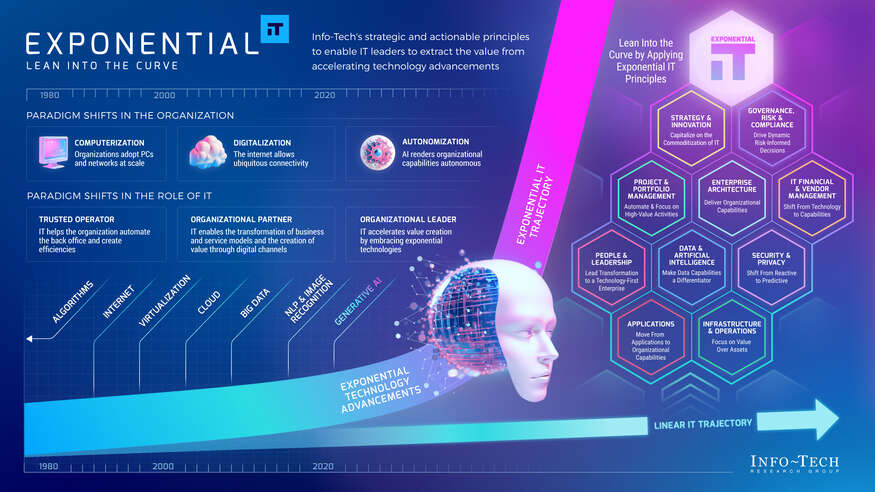 Explore the Art of the Possible for Exponential IT
Explore the Art of the Possible for Exponential IT
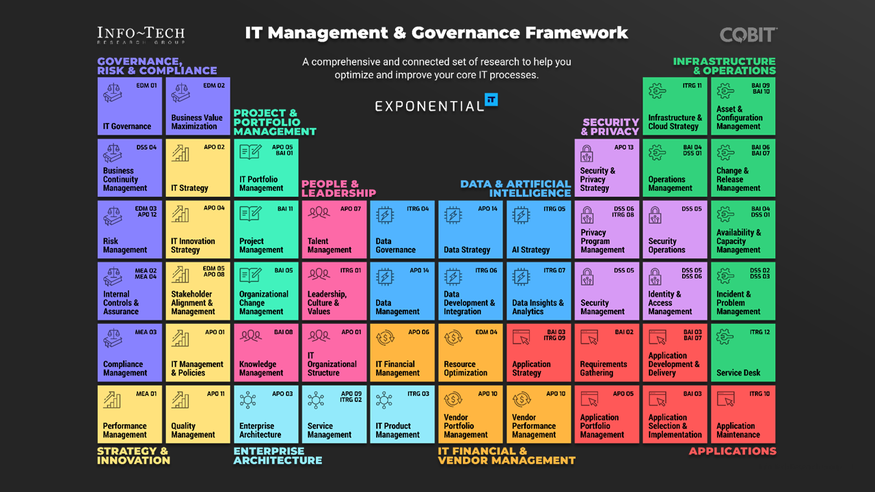 IT Management & Governance: The Next Evolution
IT Management & Governance: The Next Evolution
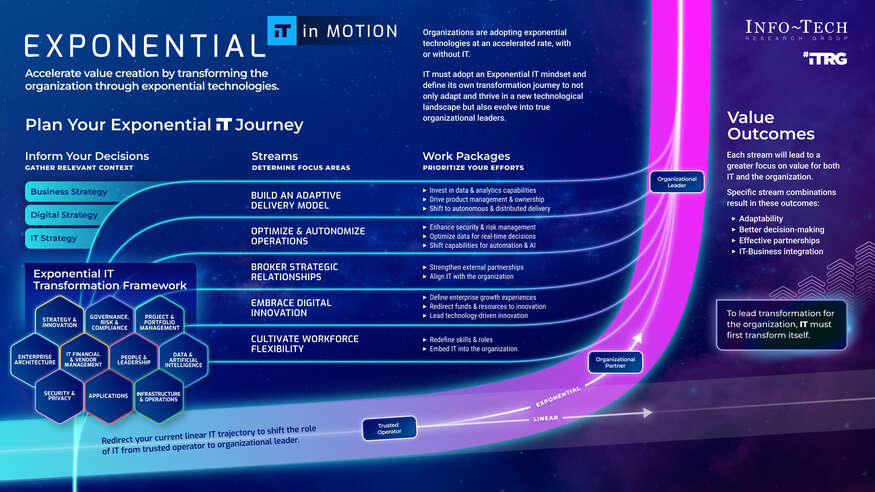 Bending the Exponential IT Curve Keynote
Bending the Exponential IT Curve Keynote
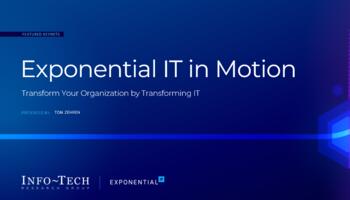 Exponential IT in Motion: Transform Your Organization by Transforming IT
Exponential IT in Motion: Transform Your Organization by Transforming IT
 AI Trends 2025
AI Trends 2025
 LIVE 2024 Keynote Presentations
LIVE 2024 Keynote Presentations
 LIVE 2024 Lightning Round Presentations
LIVE 2024 Lightning Round Presentations
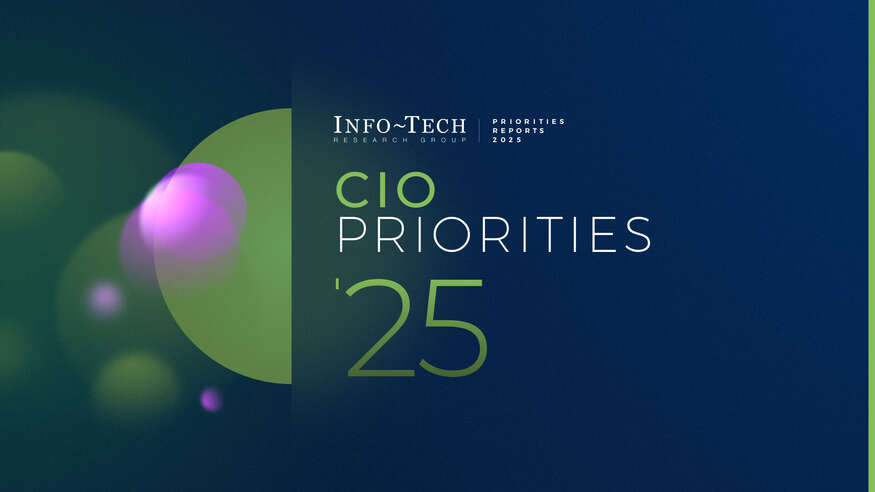 CIO Priorities 2025
CIO Priorities 2025
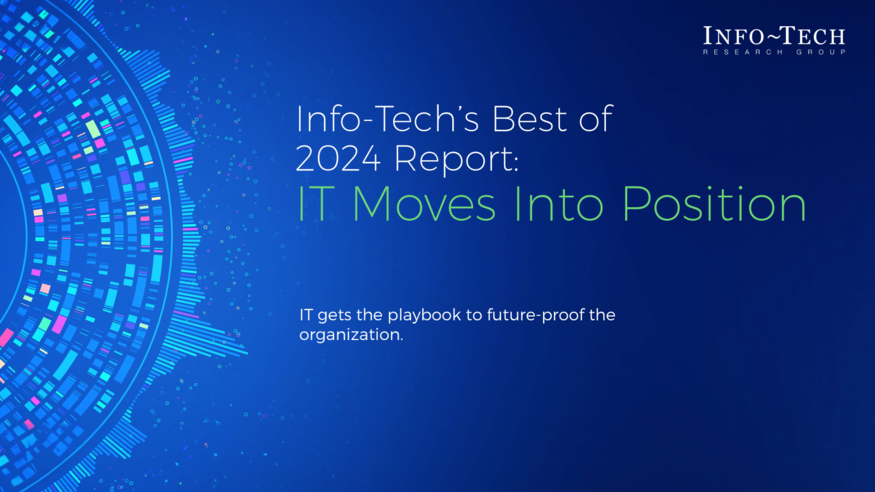 Info-Tech’s Best of 2024 Report: IT Moves Into Position
Info-Tech’s Best of 2024 Report: IT Moves Into Position
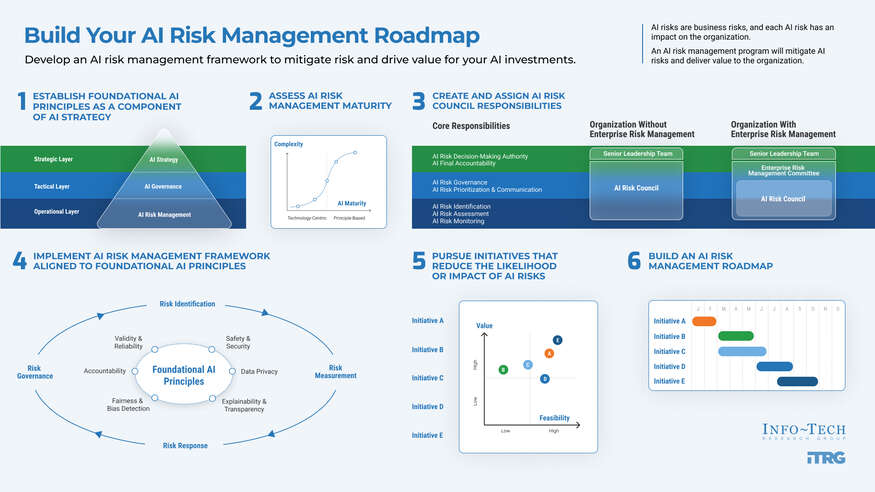 Build Your AI Risk Management Roadmap
Build Your AI Risk Management Roadmap
_preview5a18.jpg) Build Your Agentic AI Prototype
Build Your Agentic AI Prototype
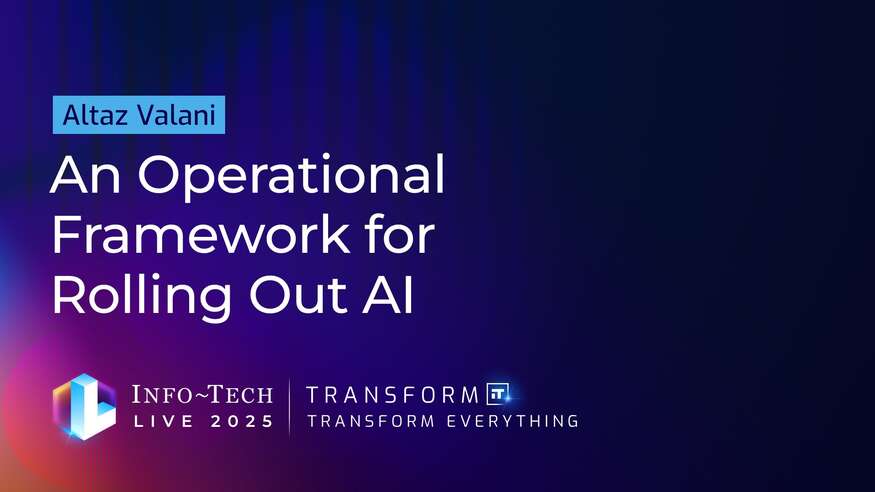 An Operational Framework for Rolling Out AI
An Operational Framework for Rolling Out AI
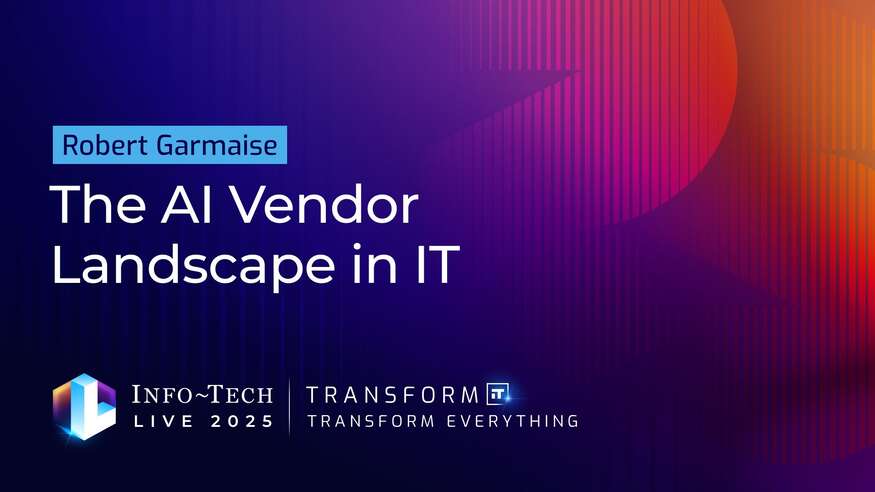 The AI Vendor Landscape in IT
The AI Vendor Landscape in IT
 Run IT By the Numbers
Run IT By the Numbers
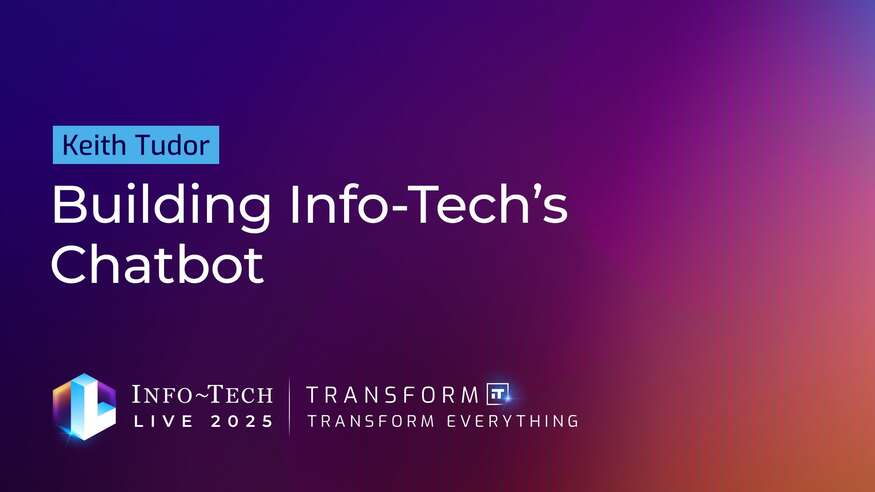 Building Info-Tech’s Chatbot
Building Info-Tech’s Chatbot
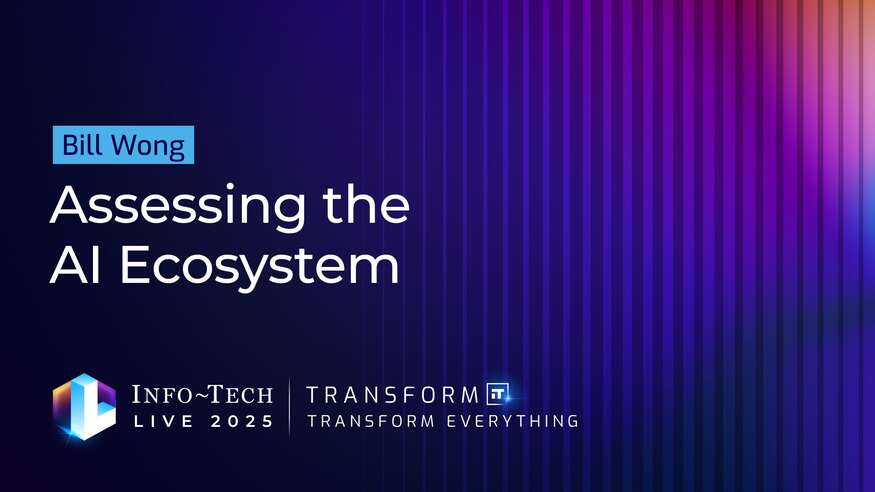 Assessing the AI Ecosystem
Assessing the AI Ecosystem
 Bring AI Out of the Shadows
Bring AI Out of the Shadows
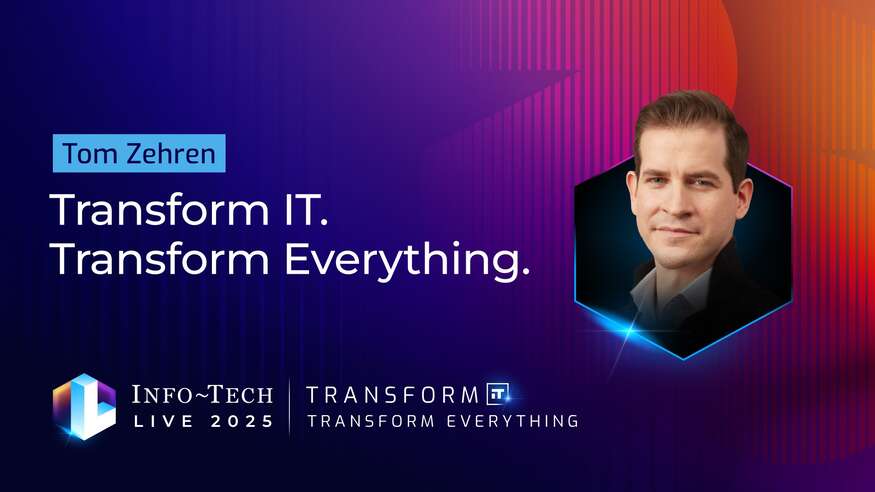 Transform IT, Transform Everything
Transform IT, Transform Everything
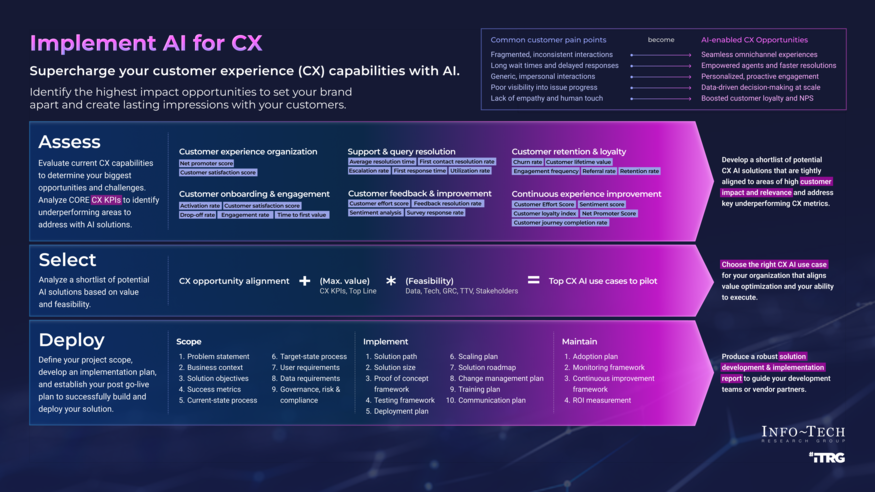 Implement AI for Customer Experience
Implement AI for Customer Experience
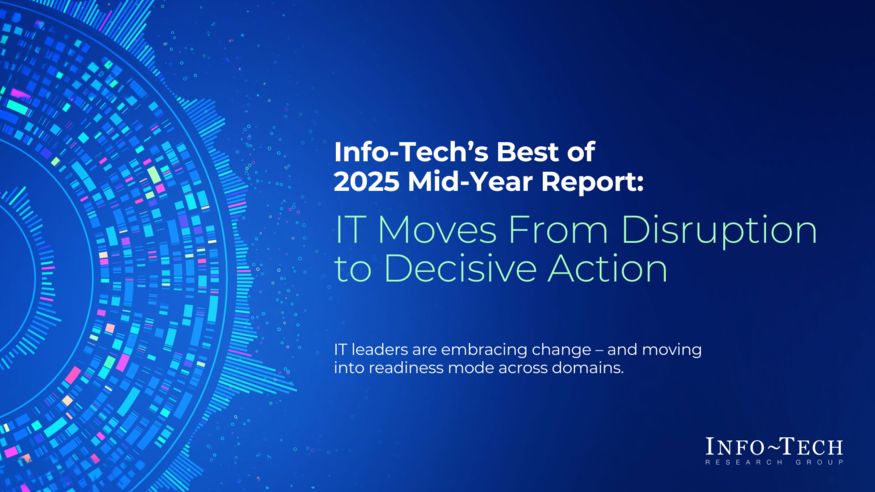 Info-Tech’s Best of 2025 Mid-Year Report: IT Moves From Disruption to Decisive Action
Info-Tech’s Best of 2025 Mid-Year Report: IT Moves From Disruption to Decisive Action
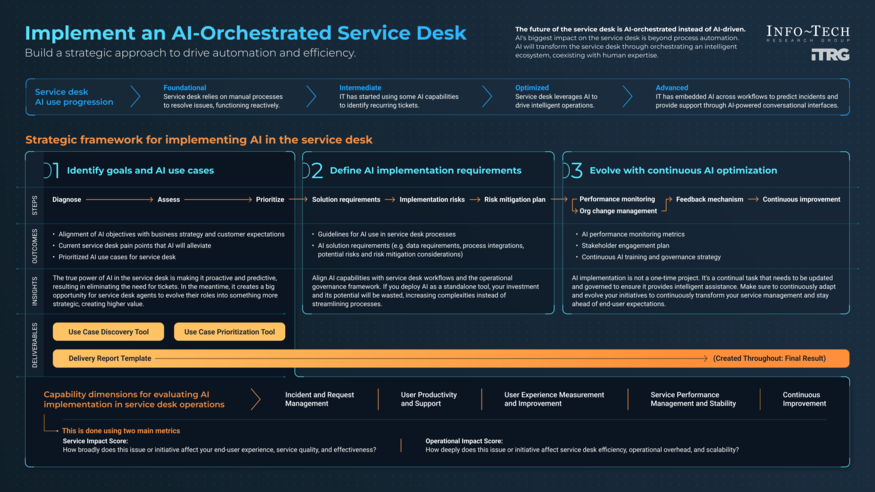 Implement an AI-Orchestrated Service Desk
Implement an AI-Orchestrated Service Desk
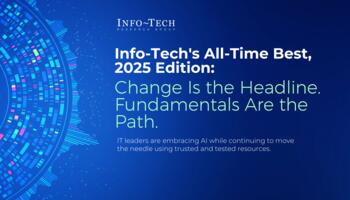 Info-Tech's All-Time Best, 2025 Edition: Change Is the Headline, Fundamentals Are the Path
Info-Tech's All-Time Best, 2025 Edition: Change Is the Headline, Fundamentals Are the Path
 Tech Trends 2026
Tech Trends 2026